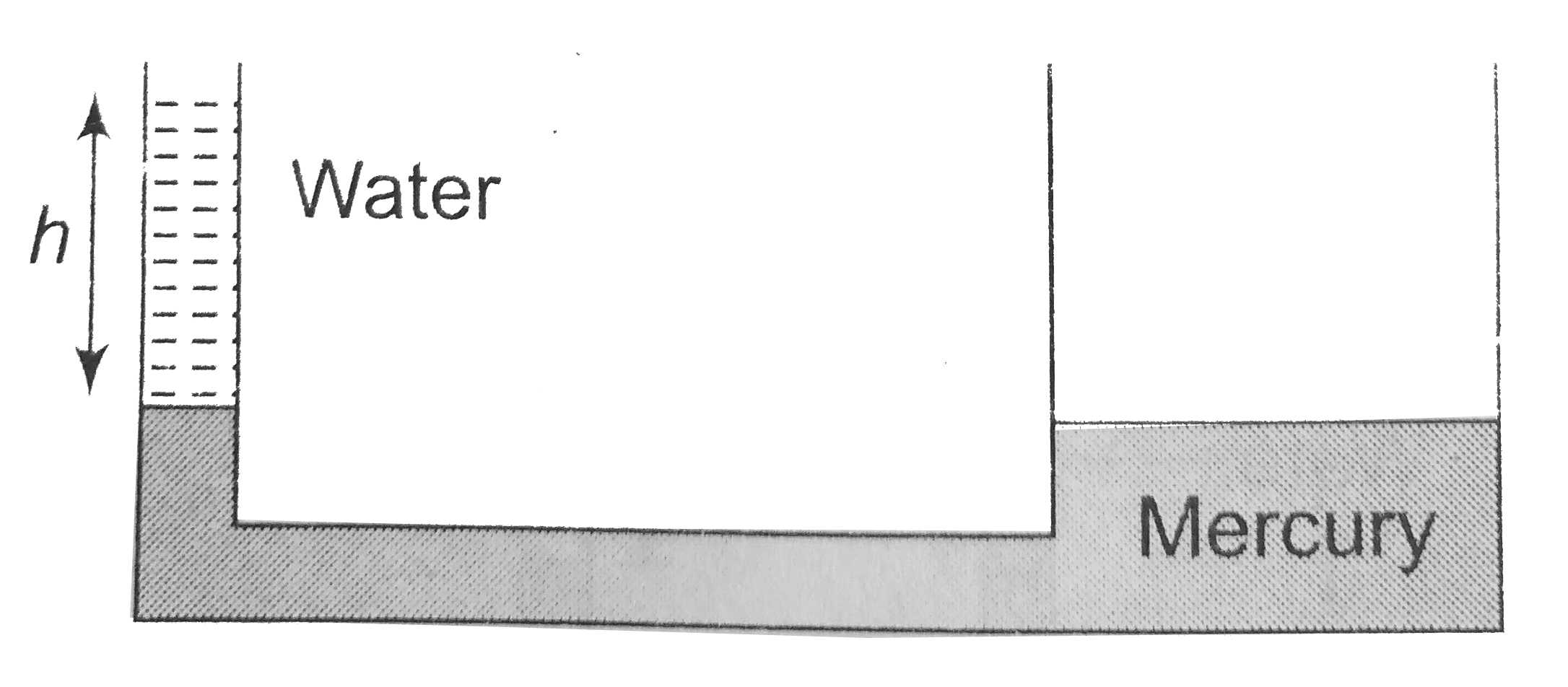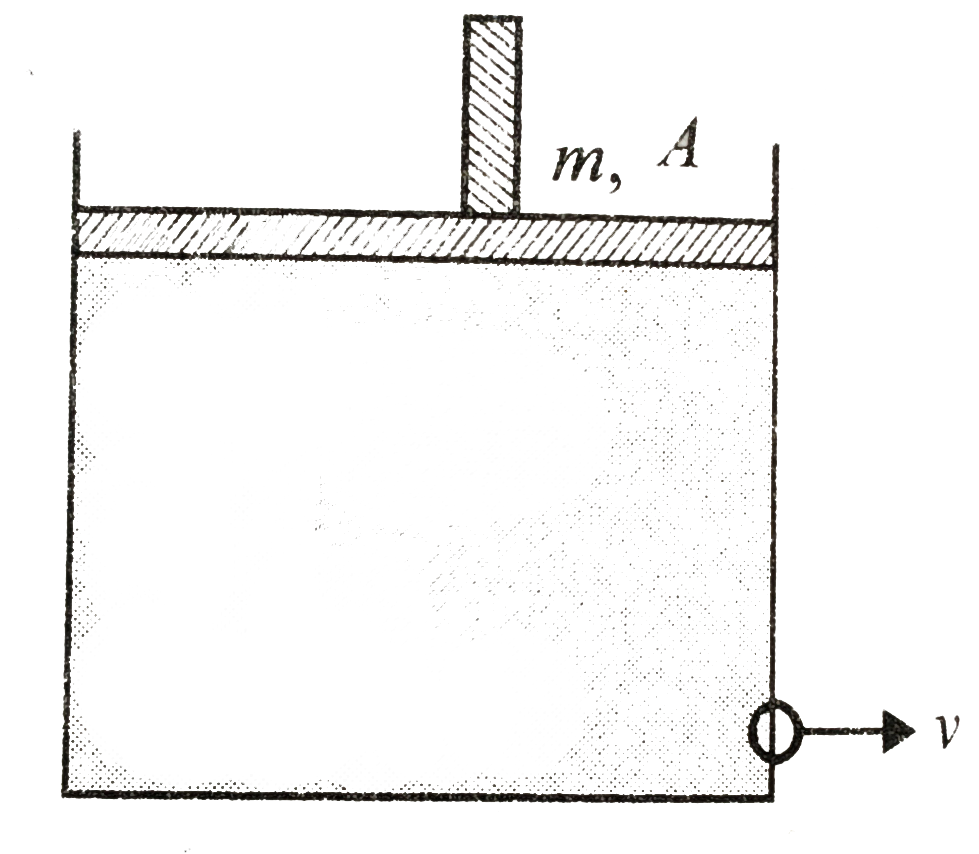Two cylindrcal vesels placed on a horizontal table contain water and mercury respectively up to the same height. There is a small hole in the walls of each of the vessels at half the height of liquids in the vessels. Find out the ratio of the velocities of efflux of water and mercury from the holes. Whcih of the two jets of liquid will fall at a greater distance on the table from the vessel? Relative density of mercury with respect to water = 13.6
To solve the problem, we will use Torricelli's theorem, which states that the velocity of efflux of a fluid under the force of gravity through an orifice is given by the equation:
v=√2gh
where:
- v is the velocity of efflux,
- g is the acceleration due to gravity,
- h is the height of the liquid column above the hole.
Step 1: Identify the height of the liquid column
Both vessels contain liquids (water and mercury) up to the same height. Let's denote this height as h.
Step 2: Calculate the velocity of efflux for water
Using Torricelli's theorem for water, the velocity of efflux (vw) from the hole in the water vessel is given by:
vw=√2gh
Step 3: Calculate the velocity of efflux for mercury
For mercury, the velocity of efflux (vm) from the hole in the mercury vessel is also given by:
vm=√2gH
where H is the height of the mercury column above the hole. Since the hole is at half the height of the liquid, we have H=h.
Thus, the velocity of efflux for mercury is:
vm=√2gh
Step 4: Find the ratio of the velocities of efflux
Now we can find the ratio of the velocities of efflux of water and mercury:
Ratio=vwvm=√2gh√2gh=1
Step 5: Determine which jet falls at a greater distance
The distance a jet of liquid falls horizontally is influenced by its velocity and the time it takes to fall to the ground. Since both jets have the same velocity of efflux and are at the same height, they will both fall at the same distance from the vessel.
Final Answer
1. The ratio of the velocities of efflux of water and mercury is 1:1.
2. Both jets will fall at the same distance on the table from the vessel.
---
- v is the velocity of efflux,
- g is the acceleration due to gravity,
- h is the height of the liquid column above the hole.
Both vessels contain liquids (water and mercury) up to the same height. Let's denote this height as h.
Using Torricelli's theorem for water, the velocity of efflux (vw) from the hole in the water vessel is given by:
For mercury, the velocity of efflux (vm) from the hole in the mercury vessel is also given by:
Now we can find the ratio of the velocities of efflux of water and mercury:
The distance a jet of liquid falls horizontally is influenced by its velocity and the time it takes to fall to the ground. Since both jets have the same velocity of efflux and are at the same height, they will both fall at the same distance from the vessel.
1. The ratio of the velocities of efflux of water and mercury is 1:1.
2. Both jets will fall at the same distance on the table from the vessel.
Topper's Solved these Questions
- Mechanical Properties of fluidsBOOK - SL ARORACHAPTER - Mechanical Properties of fluidsEXERCISE - Exercise
459 Videos
- Mathematical toolsBOOK - SL ARORACHAPTER - Mathematical toolsEXERCISE - Exercise
20 Videos
- Mechanical Properties of SolidsBOOK - SL ARORACHAPTER - Mechanical Properties of SolidsEXERCISE - Example
113 Videos
Similar Questions
Water and mercury are filled in two cylindrical vessels up to same height. Both vessels have a hole in the wall near the bottom. If υ1andυ2 are the velocity of water and mercury coming out of the holes, find the relaton between υ1andυ2.
View SolutionThe mean pressure on the walls of a vessel containing liquid upto height h is______
View Solution
Knowledge Check
Two communicating vessels contain mercury. The diameter of one vessel in n times larger then the diameter of the other. A column of water of height h is poured into the left vessel. The mercury level will rise in the right hand vessel (s = relative density of mercury and ρ = density of water) by
 An2h(n+1)2sBh(n2+1)sCh(n+1)2sDhn2s
An2h(n+1)2sBh(n2+1)sCh(n+1)2sDhn2sA cylindrical vessel contains a liquid of density ρ up to height h. The liquid is closed by a piston of mass m and area of cross section A. There is a small hole at the bottom of the vessel. The speed v with which the liquid comes out of the hole is
 A√2ghB√2(gh+mgpA)C√2(gh+mgA)D√2gh+mgA
A√2ghB√2(gh+mgpA)C√2(gh+mgA)D√2gh+mgAIn a container, filled with water upto a height h, a hole is made in the bottom. The velocity of water flowing out of the hole is
Aproportional to hBproportional to h1/2Cproportional to h2Dindependent of h
The ratio of height of a mercury column in a barometer at a place to the height of the liquid column at the same place are 1:4. Find the density of the liquid.
View SolutionWater is coming out of a hole made in the wall of a fresh water tank . If the size of he hole is increasesd, (i) will velocity of efflux of water change? (ii) will the volume of the water coming out per second change?
View SolutionWater and mercury are filled in towi cylinderical vessels up to same height. Both vesels hve a hole in thewal near the bottom. The velocity of water and mercury coming out of the holes are v1andv2 respectively.
View SolutionA cylindrical vessel of cross section A contains water to a height h. There is a hole in the bottom of radius 'a'. The time in which it will be emptied is:
View SolutionA cylindrical vessel contains a liquid of density ρ up to height h. The liquid is closed by a piston of mass m and area of cross section A. There is a small hole at the bottom of the vessel. The speed v with which the liquid comes out of the hole is

View Solution
